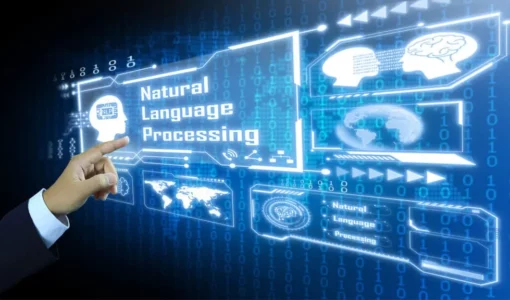Afterward, classifiers were trained based on nonlinear support vector machines, and their average scores were used for final fusion results. Still, it’s worth noting that machine learning image recognition whisks us handily away from the days where programmers needed to code rules and onward to the moments in which algorithms themselves are creating the rules. Instead, let’s focus on why image recognition is not only inevitable but powerful when driven by machine learning. Image recognition has numerous standalone applications that retail businesses, B2B enterprises, and even public works bodies are beginning to pursue. Image recognition uses labels to classify images, and these can be either single or multiclass recognition exercises.
The reason why convolutional neural network is hugely popular is because of their architecture, the best thing is there is no need of feature extraction. The system learns to do feature extraction and the core concept is, it uses convolution of image and filters to generate invariant features which are passed on to the next layer. The features in next layer are convoluted with different filters to generate more invariant and abstract features and the process continues till it gets final feature/output which is invariant to occlusions. The most commonly used architectures of convolutional neural network are LeNet, AlexNet, ZFNet, GoogLeNet, VGGNet, and ResNet. In the age of information explosion, image recognition and classification is a great methodology for dealing with and coordinating a huge amount of image data.
Image Recognition Market Share Insights
Since these are only 32×32 images, they are relatively blurry, but you can still tell which class they are part of. The fully-connected layer now does exactly what we intended to do with the whole image at the beginning. We create a neuron for each entry in the smaller 2×2 matrix and connect them to all neurons in the next layer. This gives us significantly fewer dimensions and requires fewer resources in training. It should be noted that the result of this dot product between two matrices is a single value and through repetition of this process on different input patches, we get a matrix in the end. Computer vision is one of the essential components of autonomous driving technology, including improved safety features.
- Image recognition technology has restructured the stereotypical patterns of assuring an individual’s identity in a much more effective way.
- If you’re still unsure about the value of image recognition, we recommend that you test out these image-recognition use cases for yourself.
- The photo captured by the smartphone is uploaded to an app that searches an inventory of products to find similar products using AI technology.
- The CNN is implemented using Google TensorFlow [38], and is trained using Nvidia P100 GPUs with TensorFlow’s CUDA backend on the NSF Chameleon Cloud [39].
- Finally, there is a fully-connected layer, as we already know it from regular neural networks.
- Random forest is a supervised learning algorithm which is used for both classification as well as regression.
Furthermore, deep learning algorithms can be employed to achieve very high
accuracy, much more than professional medical practitioners can achieve. Image classification is the process of categorizing an image into one or more predefined classes or categories. Image annotation is crucial in image classification as it involves labeling images with metadata such as class labels, providing the necessary labeled data for training computer vision models. Accurate image annotations help the model learn the features and patterns that distinguish between different classes and improve the accuracy of the classification results. Image classification has numerous applications such as medical diagnosis, content-based image retrieval, and autonomous driving, where accurate classification is crucial for making correct decisions. Zebra Medical Vision is a deep learning medical imaging analytics company whose imaging analytics platform allows identifying risks and offering treatment pathways for oncology patients.
How CNNs have improved image recognition in search
Up until 2012, the winners of the competition usually won with an error rate that hovered around 25% – 30%. This all changed in 2012 when a team of researchers from the University of Toronto, using a deep neural network called AlexNet, achieved an error rate of 16.4%. If you still have reservations about the importance of image recognition, we suggest you try these image recognition use cases yourself. You can enjoy tons of benefits from using image recognition in more ways than just identifying pictures. Now, it can be used to identify not just photos but also voice recordings, text messages, and various other sources of information.
The Role of Artificial Intelligence in Social Media Technologies – CityLife
The Role of Artificial Intelligence in Social Media Technologies.
Posted: Thu, 08 Jun 2023 08:27:24 GMT [source]
With computer
vision, these technology giants have developed driverless cars that could
understand traffic signs and even communicate with each other through sensors. If you wish to learn more about Python and the concepts of Machine learning, upskill with Great Learning’s PG Program Artificial Intelligence and Machine Learning. In case you want the copy of the trained model or have any queries regarding the code, feel free to drop a comment.
Application Insights
After all, image identification technology is just another tool in the app marketing toolbox. This time, we will use Adam as the optimizer since it was originally used while training on Imagenet. We’ll use binary cross-entropy as our loss function because we have only 2 classes. Specific objects within a class may vary in size and shape yet still represent the same class.
AI Tools: Google AutoML Vision – CityLife
AI Tools: Google AutoML Vision.
Posted: Mon, 29 May 2023 07:00:00 GMT [source]
Our vision capabilities have evolved to quickly assimilate, contextualize, and react to what we are seeing.
Artificial Intelligence in Manufacturing Market to Reach USD 115.19 billion, Globally by 2033
The ImageNet dataset [28] has been created with more than 14 million images with 20,000 categories. The pattern analysis, statistical modeling and computational learning visual object classes (PASCAL-VOC) is another standard dataset for objects [29]. The CIFAR-10 set and CIFAR-100 [30] set are derived from the Tiny Image Dataset, with the images being labeled more accurately.

This is what image processing does too – Image recognition can categorize and identify the data in images and take appropriate action based on the context of the search. This all changed as computer hardware rapidly evolved from the late eighties onwards. With costs dropping and processing power soaring, rudimentary algorithms and neural networks were developed that finally allowed AI to live up to early expectations. A social media user is shown snapshots of people he may know based on face-recognition technology and asked if he wants to add them as his friends in the app.
Materials and Methods
Let’s focus on what image classification exactly is in machine learning and expand further from there. We’ve compiled the only guide to image classification that you’ll need to learn the basics — and even something more. Image recognition requires “training.” That’s why it’s such a perfect candidate for machine learning. Both functionalities depend on a neural network for learning or processing data.
- Many organizations don’t have the resources to fund computer vision labs and create deep learning models and neural networks.
- The rising competition among image recognition solution providers has propelled vendors to focus on the development of innovative products to sustain in the competition.
- A deep-learning CNN has several types of layers of nodes, each of which learns to detect different features of an image.
- Here, companies and investors alike should consider waiting for the outcome and impact of legal and legislative bodies as they define the necessary performance standards and safeguards of image recognition.
- Current and future applications of image recognition include smart photo libraries, targeted advertising, interactive media, accessibility for the visually impaired and enhanced research capabilities.
- Education—image recognition can help students with learning difficulties and disabilities.
The number of layers and subsequent nodes matter because more layers and nodes equal better and more accurate neural network predictive capabilities. For image recognition, that means improved accuracy and zero issues like Google’s unfortunate metadialog.com snafu. In image recognition, the computer relies on the numerical values of each of the pixels that make up a digital image. As it evaluates these values — aka, numerical data — it creates rules to recognize patterns and regularities.
The Concept Of AI Image Recognition
A computer vision model cannot detect, recognize, or classify images without using image recognition technologies. A software system for AI-based picture identification should therefore be able to decode images and perform predictive analysis. In the process of neural network image recognition, the vector or raster encoding of the image is turned into constructs that depict physical objects and features. Computer vision systems can logically analyze these constructs, first by simplifying images and extracting the most important information, then by organizing data through feature extraction and classification.

Image recognition technology is an imitation of the techniques that animals detect and classify objects. Common object detection techniques include Faster Region-based Convolutional Neural Network (R-CNN) and You Only Look Once (YOLO), Version 3. R-CNN belongs to a family of machine learning models for computer vision, specifically object detection, whereas YOLO is a well-known real-time object detection algorithm. Major companies from various verticals, such as automotive, retail and e-commerce, security, and healthcare, are rapidly implementing digital image processing. This acquisition was made to serve consumer packaged goods (CPG) customers globally by providing a comprehensive set of in-store execution solutions. In interactive control systems, computer vision is a crucial component of the deep learning technology interface in creative and cultural product development processes (shown in Table 2).
Visual product search
Intermittent weights to neural networks were updated to increase the accuracy of the systems and get precise results for recognizing the image. Therefore, neural networks process these numerical values using the deep learning algorithm and compare them with specific parameters to get the desired output. Image recognition is set of algorithms and techniques to label and classify the elements inside an image. Image recognition models are trained to take an input image and outputs previously classified labels that defines the image.
What is the value of image recognition?
Image Recognition Market size was valued at USD 36.1 Billion in 2021 and is projected to reach USD 177.1 Billion by 2030, growing at a CAGR of 18.3% from 2023 to 2030.
What is value in image processing?
Each of the pixels that represents an image stored inside a computer has a pixel value which describes how bright that pixel is, and/or what color it should be. In the simplest case of binary images, the pixel value is a 1-bit number indicating either foreground or background.








